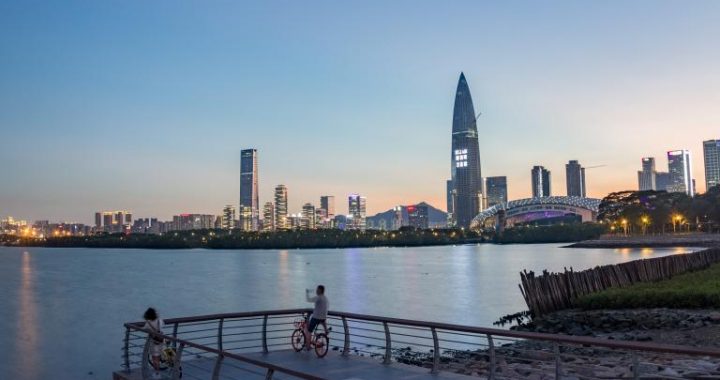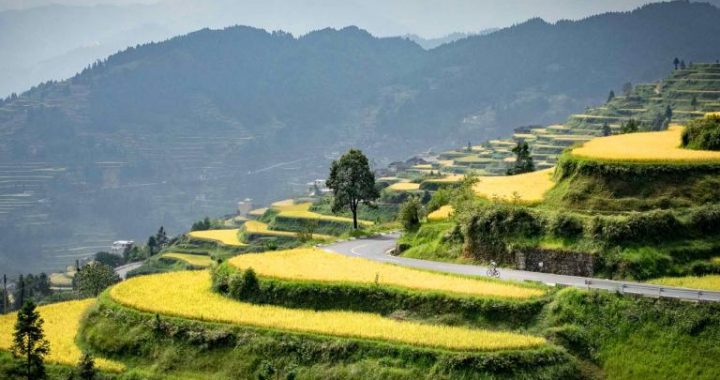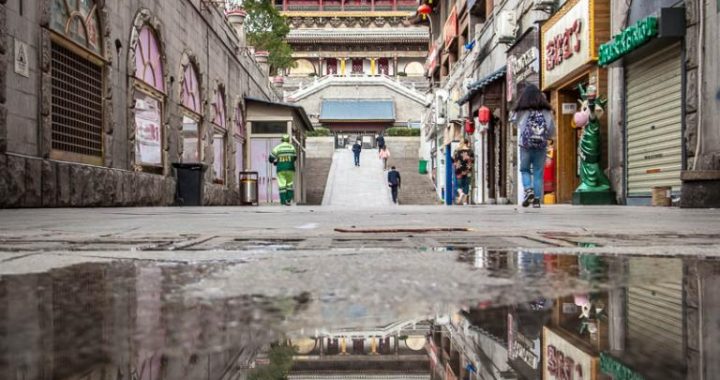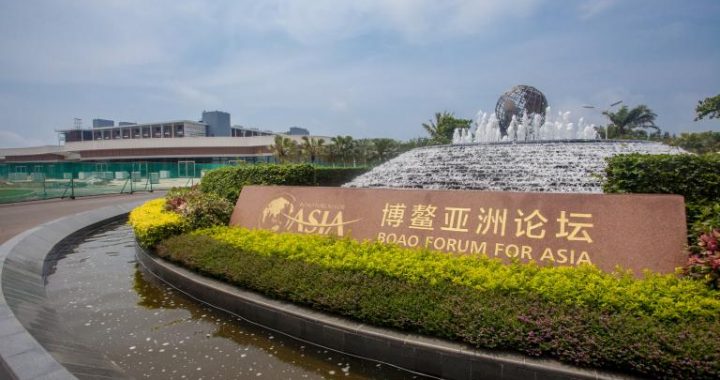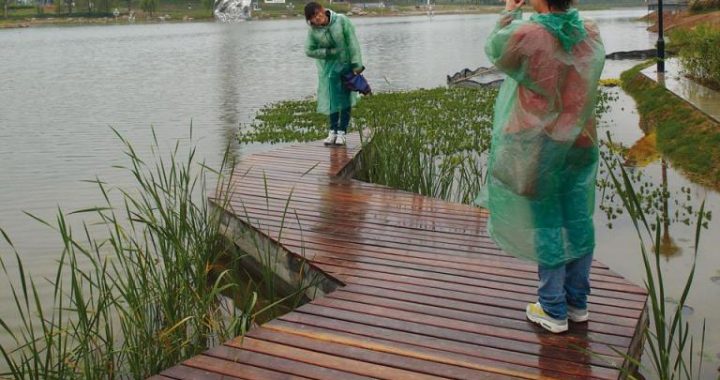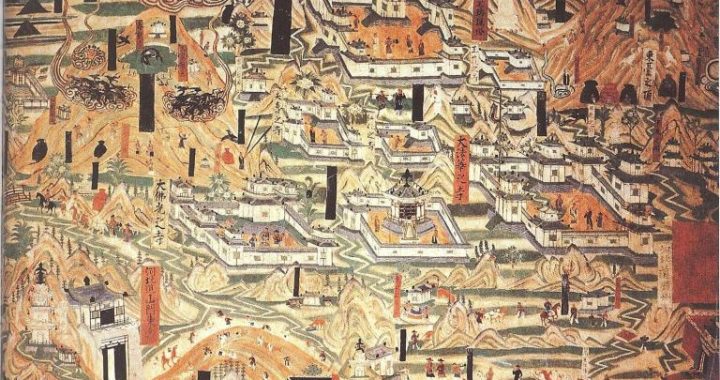Wild Goose Pagodas in Xi’ an
8 min readGiant Wild Goose Pagoda used to be the place to store sutras in Ci’ en Temple in Chang’ an (renamed as Xi’ an today) in the Tang dynasty. Located in Ci’ en Temple,4 kilometers south of Xi’ an city in Shaanxi province, it is also known as Ci’ en Temple Pagoda.
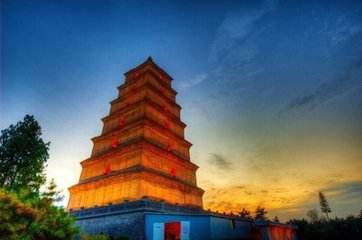
There is a story as to how this pagoda got its name. According to Records of the Western Regions in the Great Tang Dynasty, there used to be a pagoda in the mountains in the remote areas in Magadha (a kingdom in ancient India).All the monksin the pagoda believed in Hinayana Buddhism and only had the three kinds of “clean” flesh (flesh from a creature that is not killed by the monks, and the monks do not see or hear the killing of it) for meals. One day,a monk wanted to have flesh verymuch, but all three kingds of clean flesh in the pagoda had been eaten up. When he was signing,a flock of wild geese flew around. The monk looked at them and said jokingly,”We are running out of meal. Bodhisattva must have known about it and sendus these wild geese.”Just at the time when he finished his words,a wild goose flew out of the flock towards the monk. It dropped on the floor and died, with its wings broken. The monk was surprised and told others about it. All the monks were confused, thinking this wild goose must have been the incarnation of Bodhisattva.
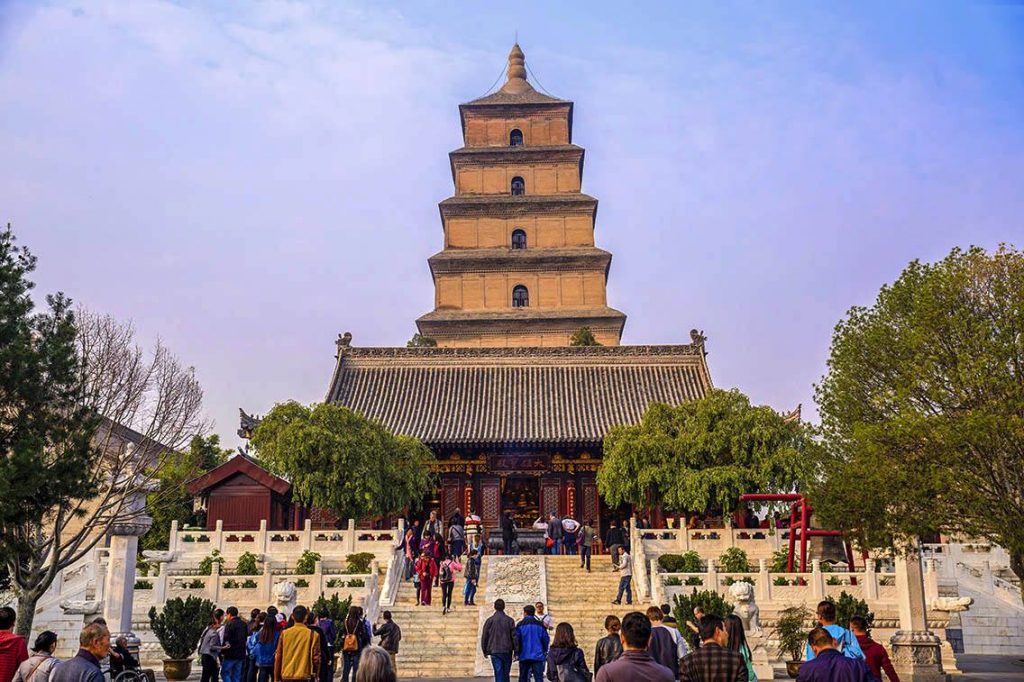
Bodhisattva did so because she tried to guide them to Mahayana Buddhism. So they buried the wild goose and renamed this pagoda as Wild Goose Pagoda.
There is no way to make clear whether this story is real or not. However, we can conjecture from other historical materials that this pagoda was built to commemorate Xuanzang’s (a famous monk in Chinese history) great feat of going westward for Buddhist scriptures and translating these scriptures into Chinese. He used to believe in Hinayana Buddhism, but later believed in Mahayana Buddhism instead. In 617, Xuanzang went far away from Chang’ an to India alone in order to study Buddhist sutras. Religion and science were very advanced in India at that time. Different sects of religious beliefs existed together in India, attracting people from all parts of the world to study there. Xuanzang studied hard in India. He visited almost all the famous teachers available.
After several years of study, he had mastered the doctrines of all sects and was well known for his eloquence. It is said that one day, Siladitya, king of India, came up with the idea of holding an academic debate, inviting Chinese scholar Xuanzang as the host. The host was responsible to give an opening speech and make ajudgment on the participants’ academic levels. Xuanzang was busy researching a sutra at that time and wanted to refuse at first. However, King Siladitya invited him sosincerely that he felt it was difficult to say no. Therefore, in the following fewdays, he worked day and night, so absorbed in writing the manuscript for speech as to forget food and sleep. Finally did he complete it before the competition date. In December of 642, over six thousand scholars, monks and kings from 18 kingdoms gathered in Kanauj to join in this grand debate. When they arrived at the debating place, they were surprised to find a piece of work-Zhi’ ejianlun (Study on How to Deal with the Evi1)-was hanging at the door. They could not but appreciate this mastery work written by Xuanzang.
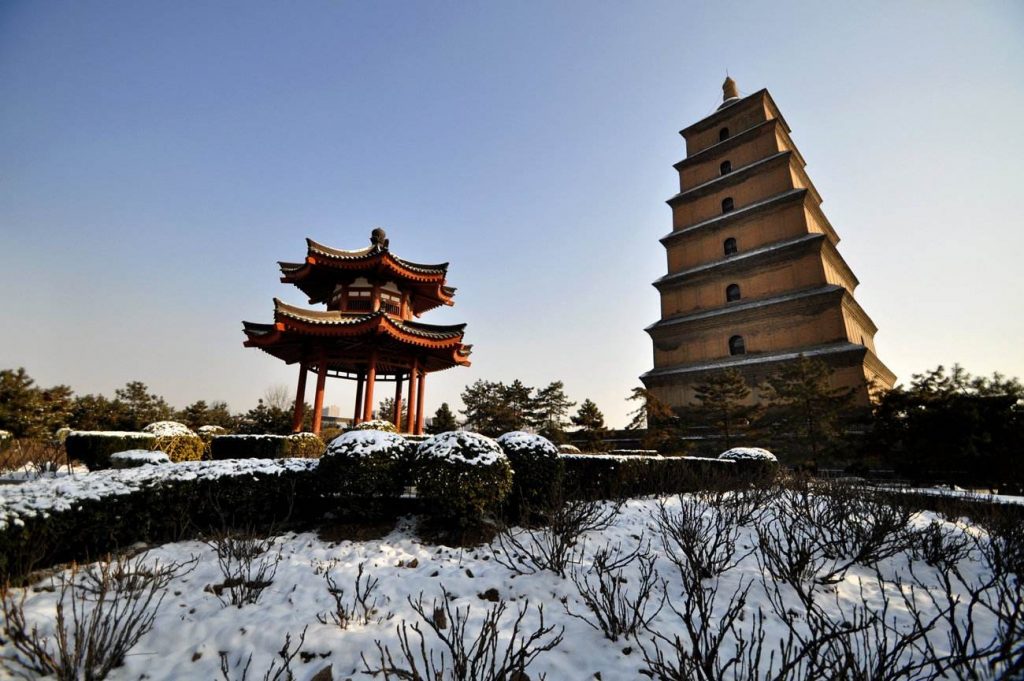
As the host, Xuanzang was highly praised for his remarkable comments that used we11-documented and extensive evidence during the 18 days of the debate. All the people were convinced by his great mastery of knowledge and brilliant academic level. King Siladitya, together with other kings, presented him with precious gifts for congratulation. Different sects of religious beliefs honored him with all kindsof title. Xuanzang became famous overnight in India and was considered as a scholar of the first class. He lived abroad for 17 years and traveled to more than 100 countries. In the 19th reigning year of Zhenguan(645), he went back to Chang’ an with 617 sutras. Both officials and monks came to receive him, eager to see this famous figure with their own eyes. Even the emperor was excited and received him in person.
Emperor Taizong promised him high posts and rewards, but he refused politely,
expressing his will to go on studying Buddhism in Shaolin Temple in Songshan Mountain. In order to deterrent Xuanzang in Chang’ an, Emperor Taizong decided tomake him the host of Ci’ en Temple in Chang’ an. Later, Xuanzang built a pagoda in imitation of the one in India to store the sutras he brought back and named it as Giant Wild Goose Pagoda, aiming at persuading people to believe in Mahayana Buddhisi and get to the ideal state.
In the 22nd reigning year of Zhenguan (648), Prince Li Zhi issued an order to build a temple in honor of his mother Empress Zhangsun and named it Ci’ en Temple. Giant Wild Goose Pagoda in the temple was originally five-story high. Xuanzang wasafraid that the sutras might dissipate through the centuries. Therefore, he planned to build a stone pagoda of 300 feet in height in Ci’ en Temple. Emperor Gaozong suggested him to use brick instead for the reason that it took a shorter time to build with bricks. Emperor Gaozong also gave Li Zhi lots of materials and sent many people to help. The grand marvelous pagoda was completed under Xuanzang’s supervision two years later. Pitifully, it was decadent due to various reasons. It was rebuilt into a seven-storied tower-style square pagoda with flashed bricks during the period of Emperor Wu Zetian (690-705). With a height of 64.7 meters, this pagoda was made of two parts:a base and a body part. At that time, both the plane pillars and the upper parts of the door-screens at the wall were masoned by bricks on the body part. These rubbed bricks were assembled together firmly even at the stitches.
The inner part of the pagoda was also in the shape of a square. Each story was separated by floors and connected by a stair leading directly to the top. There was an ached door at the four sides on each floor. People could stand there and have a good view of Chang’ an city. In the 2nd reigning year of Chenghua in the Ming dynasty (1466), this pagoda was renovated, adding bricks on its outer part to make it more steady. It was renovated again in the 13th reigning year of Guangxu in the Qing dynasty(1887).
The outer components inside the pagoda were rebuilt as what they were initially.
The completeness of this pagoda was preserved in this way. Giant Wild Goose Pagoda is now 64 meters high and its walls are after wooden pagoda model. The square-shapedpillars and the architectures were masoned by bricks, with a cap block on the top of each pillar. There are nine rooms on the first and second stories; seven on the third and fourth stories and five on the top three stories. Eaves are hanging over each other, reaching outside the cap block. Two arrises are delicately carved on the cap block as decorations. On the door lintels of the bottom story refined Buddha paintings are carved. The most exquisite one is the Amitabha Preaching, with grand and luxurious palace painting in it.
It is said to be drawn by Yan Liben (601-673),a famous painter in the Tang dynasty. This painting is of great importance to the study on Chinese Buddhism culture and ancient architecture. Two tablets are inlayed in the brick niche inside the southern door under the pagoda. One is Preface to Sangzang’s(Xuanzang) Holy Sutra by Emperor Taizong and the other is Introduction to Sangzang’s(Xuanzang) Holy Sutra of the Tang Dynasty by Emperor Gaozong. Both of them are written by a calligrapher Zhu Suiliang (596-658) and of first class among the tablets in the Tang dynasty. They are favored not only for the beautiful handwritings on them, but also for the delicate and vivid patterns of weed vines on the edges. These two tablets are important historical relics for studying calligraphy, paintings and carvings in the Tang dynasty.
Besides, on the southeast side of the pagoda are a lot of pagodas used as monks’ tombs. Six of them were built in the Qing dynasty. The Mahavira Hall, located in the center of Ci’ en Temple, has become an important place for monks to chant sutras because clay figures of threefold embodiment of Buddha, Bodhisattvas and Arhats are put in it. The bell tower of the pagoda stands in the east, facing straightly the drum tower in the west. These constructions seem to be in dribs and drabs, but theyare actually in harmony with Giant Wild Goose Pagoda. Seeing from a distance away, all the buildings are well-balanced and ranged in an elegant way, like a wel1-painted landscape with grand conception and endless meaning.
In a word, Giant Wild Goose Pagoda, in which all classical Buddhism collections are stored, embodies a unique ethnic color and style of that age through its simple molding and grand vigor. Today, this majestic tower-style wooden-pagoda-modeled square brick pagoda has become an interesting place well known all around the world.
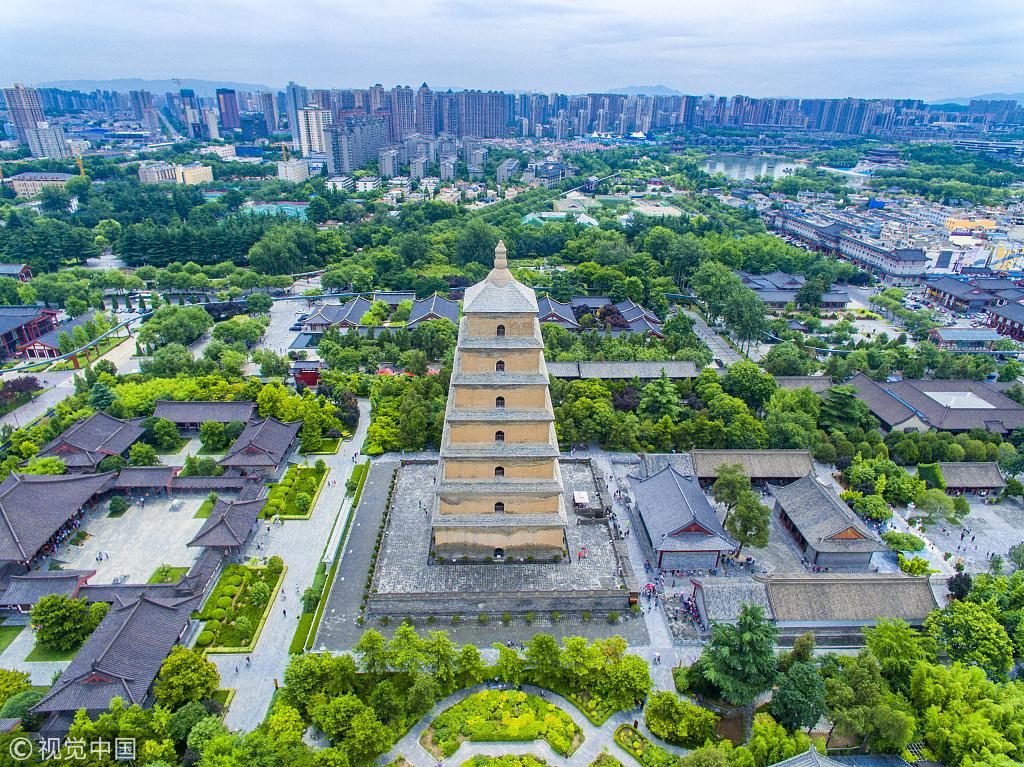
In the Qianfu Temple(Temple of Blessing) in the south of Xi’ an City, there stands another famous pagoda of the ancient Chang’ an in the Tang dynasty-Lesser Wild Goose Pagoda. It was built in the first reigning year of Jinglong (707) and is a representative of the multieaved square hollow brick architectures in the Tang dynasty. Lesser Wild Goose Pagoda is of multieave style, with brick eaves hanging over each other, reaching out of the body part. Arrises are delicately carved on theeaves as decorations. There is no pillar heads on the walls of the pagoda. The widthof the body part decreases from bottom to top. The higher the pagoda, the closer the structure ranges. The well-built body part is in the shape of a taper and nicely-balanced in proportion. The outline of it is free and smooth. This pagoda used to be 45 meters high with 15 stories, but it is reduced to 43.3 meters high today and only 13 stories are left. The plane of the pagoda shapes like a square, with a Roman arch setting on both the southern and northern sides of each floor.
There is a magical story about this pagoda in history. In 1487, an unexpected earthquake left it from top to bottom a one-inch-wide crack right in the center.34 years after that, this crack was made shut overnight in another earthquake. Peoplewere confused and amazed at this fact, and said it was A Fairy-Close, meaning thatthis crack was made shut under the help of fairies. In September,1555, an official named Wang He happened to hail up in Lesser Wild Goose Pagoda one night on his way back home. He was surprised to hear the whole story about fairy-close and wrote it down on the northern door lintel of the pagoda so as to tell later generation about this miracle. This story has been a myth for centuries. It is finally made clear during a renovation after the founding of the People’s Republic of China. When the workers were building this pagoda, they had taken the special geographical conditio of Xi’ an into consideration and made the base of the pagoda into the shape of a semi-sphere with earth rammer. By doing so, the pressure on the body part could be easily transferred somewhere else without doing harm to its inner construction. This pagoda would stand sti1l like a roly-poly. Although has experienced more than 70 earthquakes, it still stands tall and erect, full of power and grandeur.
